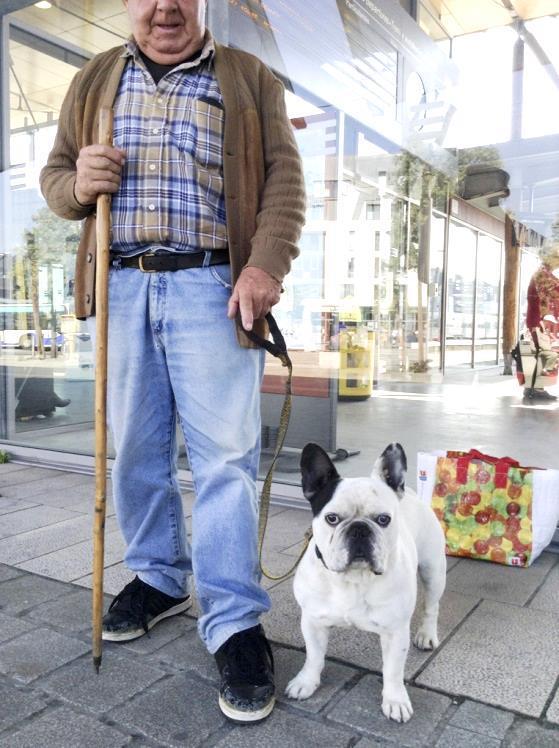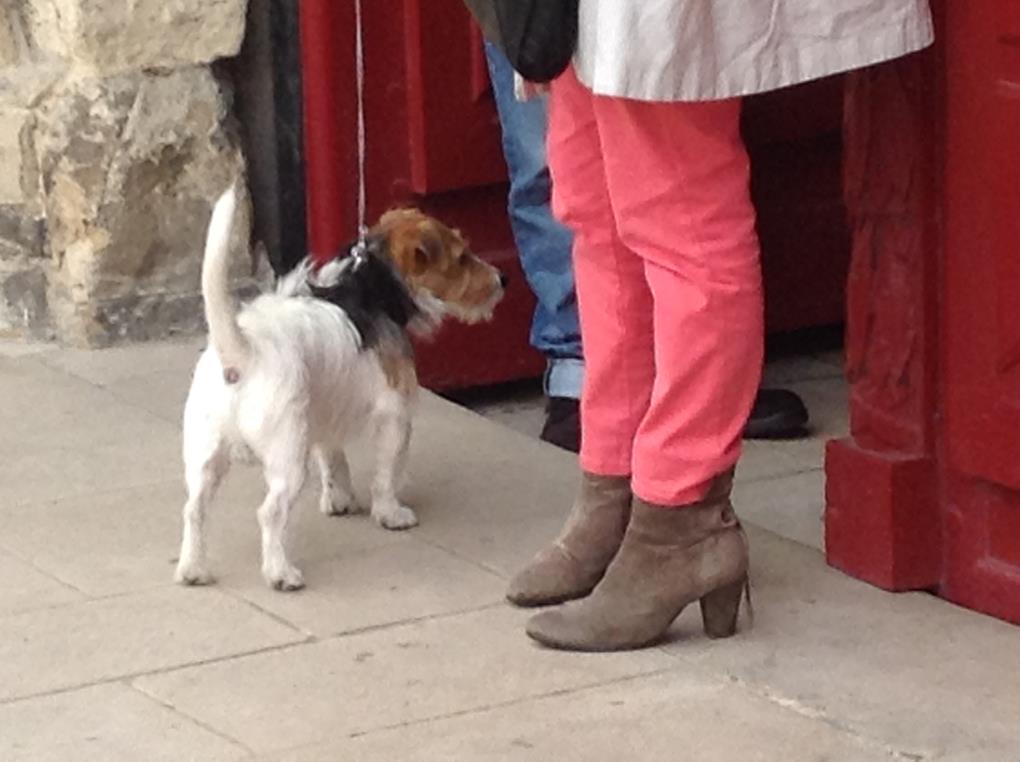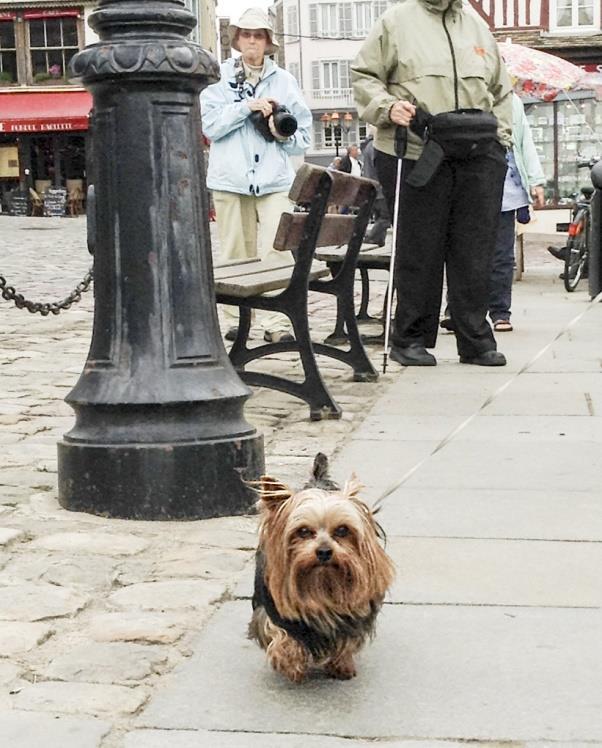

2014SeineRiverCruise
Wanderers: Lois Gray, Kay Gilmour, Sharon Feldkamp and Betsy Raiford
PROLOGUE
I like exotic travels most going to places that are hard to reach and that very few people ever visit. Places like Madagascar for a month, or Svalbard for two weeks, or Suriname and Guyana for 10 days, or the Sub-Antarctic Islands of New Zealand for two weeks. So what am I doing writing about a very common destination for many Americans France and a Seine Riverboat Cruise at that?
In May, 2014, two friends, Sharon and Betsy, prevailed on me and Kay to join them on a three week visit to Brittany, Normandy, and the towns along the Seine River. Am I sorry I went? Absolutely not! I thoroughly enjoyed this rather "tame adventure" very much. My plan here is tell you what I liked about the trip and what I didn't like about it to help someone who is entertaining the idea of going on a river cruise like this make a reasonable decision.
PRE-TRIP
As an addition to the base river cruise, Vantage offered a land based visit to these two parts of France, so we four signed up and we will never regret it. Both are history-filled and beautiful. We were also extraordinarily lucky in the weather or so we were told by the locals. This coastal section of France is windswept often, chilly and damp as well as shaped by enormous tides from the English Channel (La Manche in French) and the Atlantic Ocean. The closest distance between France & England is 21 miles, from Dover to Calais. The Channel is wider between other locations.
The terrain in both countries bordering the Channel is very similar. High chalky bluffs line both coasts called the White Cliffs by the English and the Alabaster Coast by the French. These heads can be as high as 300 feet on both sides and get their respective names because of the whitish color exhibited by the rapidly receding chalky limestone which forms them. (According to geologists on both sides, the cliffs are eroding away at a rate of about 6.5 feet per year pretty fast in geologic time.)
The terrain on both sides is relatively flat with some intervening small hills. The soil is rich with limestone so the plants, grasses, trees are lush and green. This means that agriculture
is very important on both sides of the Channel. Both areas also facilitate the raising of excellent horses, just like in Kentucky, USA, for the same reason.
The "big sky" perception in Normandy and Brittany is as impressive and beautiful as it is in the American West in such places as Montana and Colorado. Amazing cloud formations lend to this expanse overhead. Bright blue sun-filled skies also contribute to the magnitude of the heavens. On overcast days, the skies close in and lose that bigness factor. Our visit was blessed with just about perfect weather until the very end of our time there. Both these sections of France are filled with important historical events, from the time before William the Conqueror through the brutal tragedy of the World Wars of the 20th century. There is no way to be a tourist in these areas and avoid the history. The bombed out areas, the recently rebuilt towns and cities, the ancient abbeys and churches, even the gorgeous beaches testify to the human follies, wars, prejudices, hatreds, and destruction that sculpted these landscapes. Conversely, the genius, bravery, faith, artistry and endurance of human beings is also etched into the very soil of this part of the world.
A geographic approach to our trip is probably the simplest and maybe the clearest too. But make no mistake about it, history in its glory and sadness is the platform on which any visit to Normandy/Brittany will be experienced.
And so, we began our travels with a visit to the Brittany coast. Here we walked around our "home base", Saint Malo, and visited Mont St. Michel, Dinan, and the Ville de Cancale.

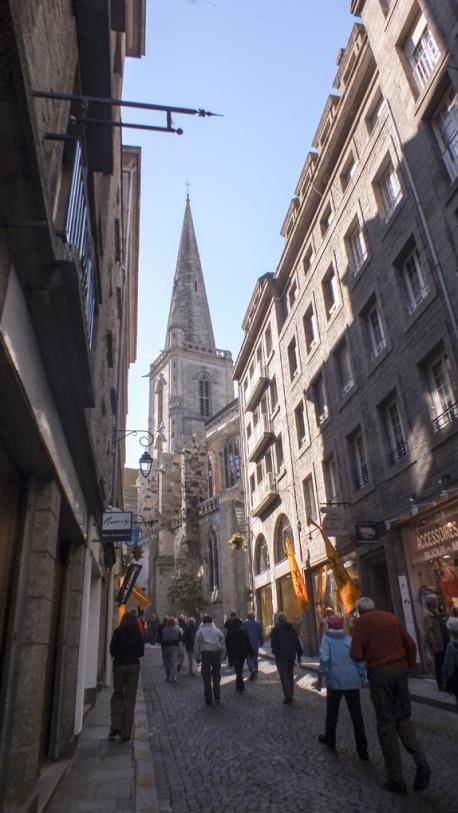
San Malo
We walked the beautiful narrow streets of San Malo for hours. The city walls are from the 15th century. The castle was built in the 1300s. The Church of St Vincent started in the 14th century with a facade added in 1713. In August 1944, Saint Malo was almost totally destroyed by fire but was rebuilt over a 12 year period from 1948-1960.

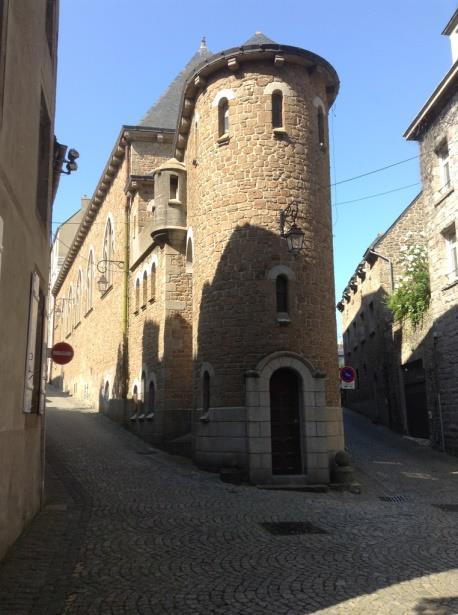

Mont San Michel
Next was a visit to the iconic Mont San Michel. The island has held strategic fortifications since ancient times and since the eighth century AD has been the seat of the monastery from which it draws its name. The structural composition of the town exemplifies the feudal society that constructed it: On top, resides God, the abbey and monastery; while below this attends the secular great halls, and at the bottom, stores and housing. Outside the walls are found the housing for the fishermen and farmers.


Dinan
This old town was built above the Rance River. The Basilica of St Saviour, started in 11th century, stands high above the Rance River.


Cancale
History has it that King Louis XIV (1638-1715) had his oysters brought to Versailles from Cancale. Currently, the farming of oysters is still a major activity in the port and there are oyster beds covering about 3 square miles easily seen from the pier at the harbor. These beds harvest about 25,000 tons of oysters each year.
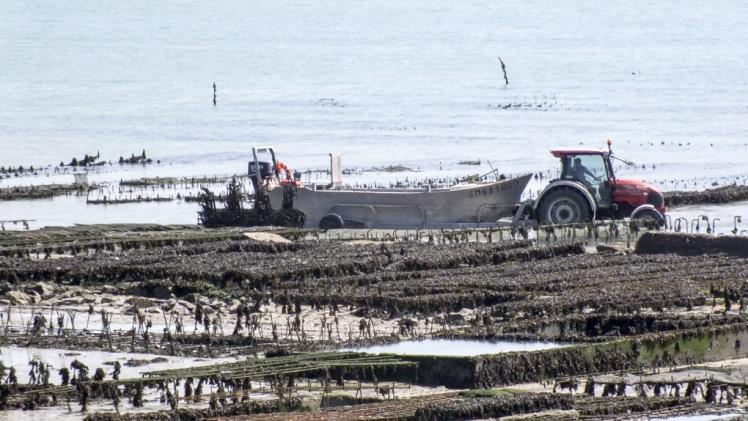


SAILINGTHESEINEFROMPARISTOCOAST
We returned to Paris by train from the pre-trip in Brittany to board the MS Venture for the cruise to the Normandy coast. Our first stop was a visit to Giverny with its Monet House and Gardens. Then we took a walk thru Vernon to Our Lady Collegiate Church Notre Dame to hear the organ accompany a recorder in concert.


Giverny
The long-time home of Claude Monet (1840 - 1926).
A visit to Monet's House and Gardens. The garden was started by Monet in 1893. It’s famous for his fascination with water lilies.

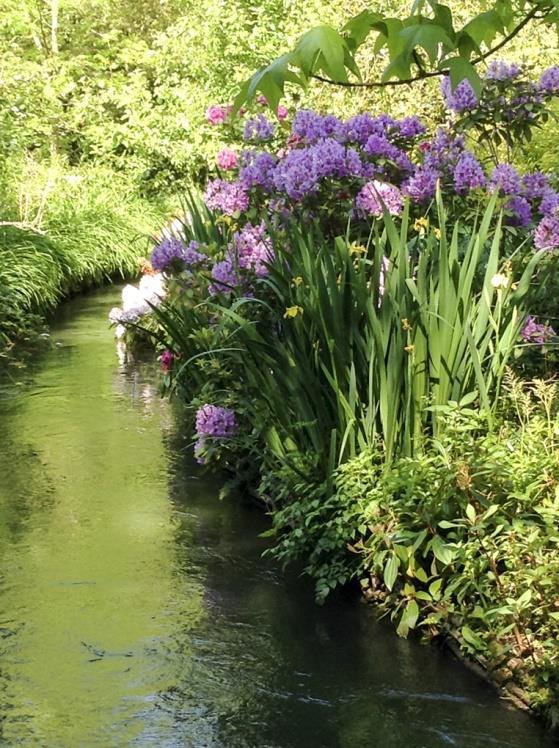

Vernon
A visit to Our Lady Collegiate Notre-Dame, (13th Century cathedral) with an organ recital with pan flute.




Rouen
We moved on to the beautiful city of Rouen with it's magnificent churches and the designated site of the martyrdom of Joan of Arc. Visit the Church of Saint Maclou, Rouen Cathedral, and the Church of Saint Joan of Arc. Finish with a tour of the Church of Saint Ouen of the Benedictine order. The abbey building itself was vacated by the time of the French Revolution and was subsequently occupied by the Town Hall of Rouen.


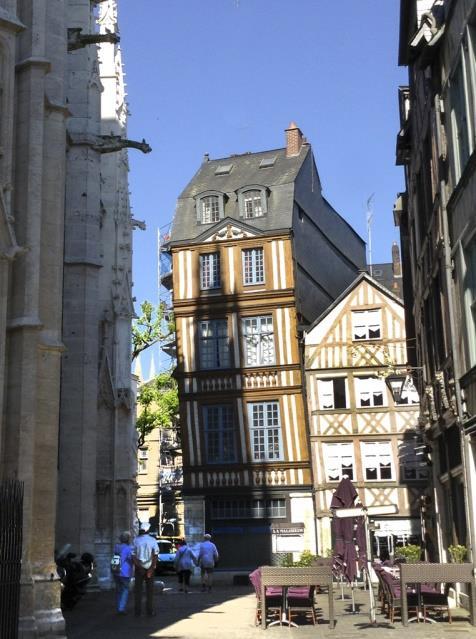

Church of Saint Maclou
Church of Saint Joan of Arc
Caudebec-En-Caux
We anchored in Caudebec-En-Caux to visit abbeys in the magnificent French countryside. Saint Wandrille Abbey - Benedictine Abbey founded by Wandregisel or Saint Wandrille (died 668) on land obtained through the influence of Wandregisel's friend Saint Ouen, Archbishop of Rouen.

Jumièges Abbey - Benedictine Abbey founded in 654. Original church burned by the Vikings in the 9th century. Current church was consecrated in 1067 in the presence of William the Conqueror and ruined during the French Revolution.


Étretat
Is a holiday retreat on the Alabaster Coast made famous by Claude Monet paintings. Took a side trip to Étretat on the Alabaster Coast where Monet painted several famous sea-side landscapes. The Alabaster Coast takes its name from the white hue of its high chalk cliffs, including those of which stretch for over 80 miles.


Le Harve - Honfleur
The ship anchored at Le Harve the English Channel coast. From there, we crossed the very long and stately Normandy bridge to visit the lovely harbor town of Honfleur. The Normandy Bridge is a cable-stayed bridge that spans the Seine linking Le Havre to Honfleur. The bridge took 7 years to build and opened in January 1995.

The Sainte-Catherine church (15th century) is the largest church made out of wood in France. The bell tower was built separate from the principal building. As it was the highest structure in the vicinity, it was the most likely to be struck by lightning.
Thus, the church would be saved if the tower went up in flames. "Axe masters" of the naval yards of the city created this building without using any saws just as their Norman ancestors (are portrayed in action in the Bayeux tapestry), as well as the Vikings before them.

St. Catherine, celebrated annually on November 25, represents young unmarried women. Born in Egypt in the third century A.D., she tried to convert the Roman emperor Maximian to Christianity.
He refused.
She then refused his offer of marriage. She was tortured on the wheel. Maximian subsequently had her beheaded. This church is dedicated to her but her tomb is located in the monastery of St. Catherine at the foot of Mount Sinai in Egypt.

Omaha Beach – American Cemetery
The cemetery is located on a bluff overlooking Omaha Beach (one of the landing beaches of the Normandy Invasion) and the English Channel. It covers 172 acres and contains the remains of 9,387 American military dead, most of whom were killed during the invasion of Normandy and ensuing military operations in World War II. A semicircular memorial with the statue, TheSpiritofAmericanYouthRisingfromtheWaves, faces the USA and contains the names of the 1557 Americans who lost their lives in the Normandy campaign but could not be found or identified,



The following day we visited Pointe du Hoc which is a promontory with a 100 ft. cliff overlooking the English Channel. It is the highest point between Utah Beach to the west and Omaha Beach to the east. The German army fortified the area with concrete casements and gun pits. On D-Day (6 June 1944) the United States Army Ranger Assault Group assaulted and captured Pointe du Hoc after scaling the cliffs.



Then we had a fascinating tour of the D-Day Museum in Arromanches-les-Bains. One of the many interesting exhibits is a representation of Mulberry Harbor. These were two prefabricated military harbors taken in sections across the English Channel from Britain with the invading army and assembled at Arromanches in less than 10 days. One was destroyed in a storm.

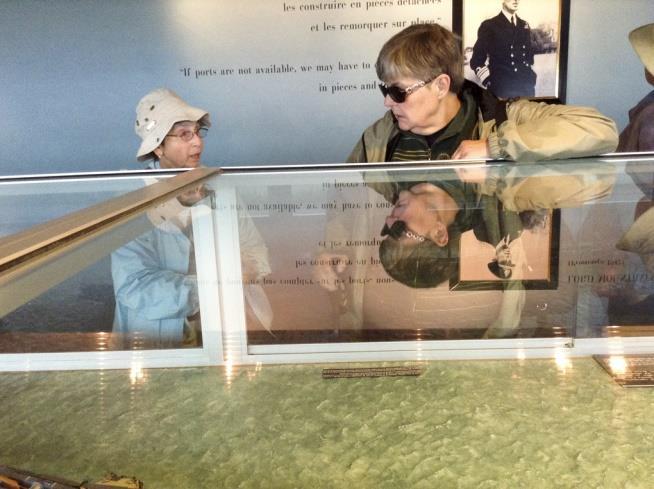

Bayeux
Next day, it's back over the Normandy Bridge to the town of Bayeux to visit the tapestry museum and cathedral. The Tapestry was created about 1070. It is an embroidered cloth nearly 230 ft. long, which depicts the events leading up to the Norman conquest of England in 1066. It consists of 50 scenes beginning with a panel of Edward the Confessor sending Harold to Normandy. The final remaining scene shows unarmored English troops fleeing the battlefield. The visitor is transported by a moving belt in a darkened passageway to see the tapestry in its entire length without a crush of fellow visitors in front or behind.


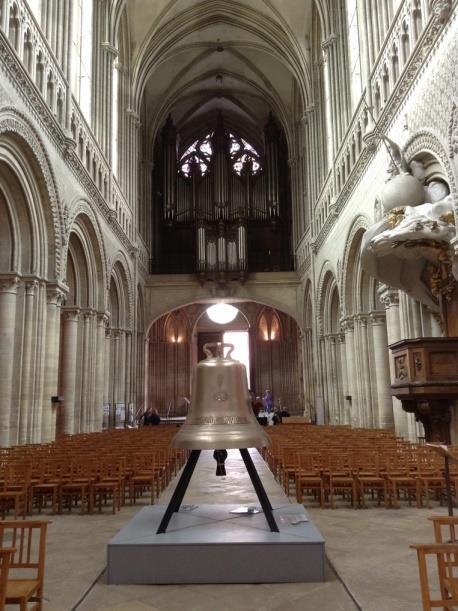


The Cathedral of Notre-Dame in Bayeux was the original home of the Bayeux Tapestry and is a national monument of France. The site is an ancient one and was once occupied by Roman sanctuaries. The present cathedral was consecrated on 14 July 1077 in the presence of William, Duke of Normandy and King of England.
SAILINGBACKTOPARIS
Les Andelys
We left the French coast to travel back up the Seine River to Paris. Our first stop is Les Andelys for a walking tour up to the hilltop overlooking the town to visit the ruins of the Chateau Gaillard. Construction began in 1196 under the auspices of Richard the Lionheart, who was simultaneously King of England and feudal Duke of Normandy. Remarkably, construction took only two years.


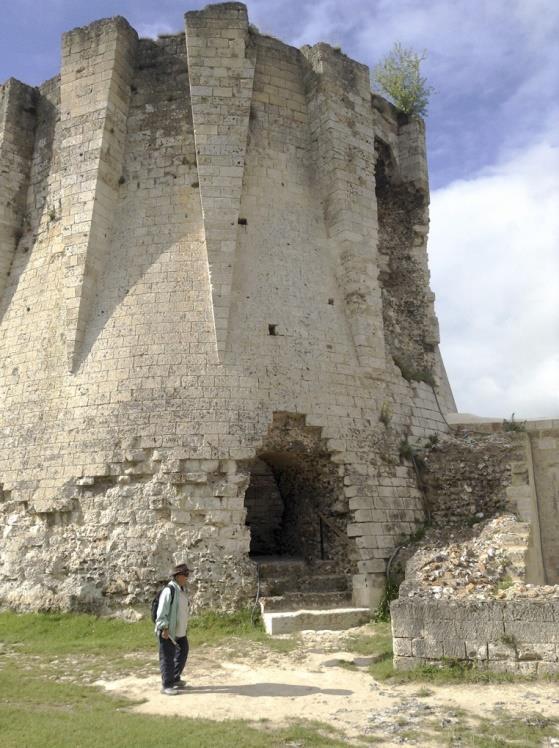

The forces of England's King John lost the castle to the French in March 1204 and with it went English command of Normandy. Humiliation and perceived weakness of King John permitted the English Barons’ challenge leading to the signing of the Magna Carta.
Back in town for a quick tour of the Saint-Sauveur church. The Saint-Sauveur church was built for the construction workers at the chateau . Works started in 1198 and were finished four years later in 1202.
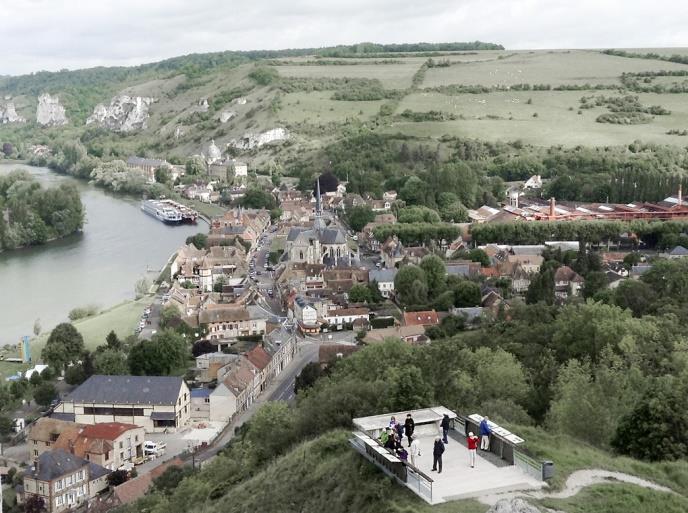
Canflans-Sainte-Honorine

Our last disembarkation prior to Paris, is Canflans-Sainte-Honorine. We walked the steep hills of the town to visit another small church and take in the views over town and river below.


The commune was originally named Conflans for its geographic position at the confluence of the Seine and Oise rivers. The village was given the addition "Sainte Honorine" in the 13th century after the female Saint Honorina, whose relics had been stored there since 876.
Due to its strategic position, Conflans is considered the capital of the French inland waterways. The right bank of the Seine is lined with barges though these are now used mainly as houseboats. Every year in June, the town celebrates the "Pardon national de la batellerie" in remembrance of its former importance to inland shipping.


Saint Honorine, patron saint of boatmen, is the oldest and most revered virgin martyr in the Normandy area of France. She died around the year AD 303 and initially buried somewhere along the coast. But in 876, with the coast threatened by the Normans, the monks guarding her relics moved them closer to the interior at the confluence of the Seine and the Oise (Conflans), placing them in the chapel associated with a fortress. That was destroyed in 1082, and the present church was built and her remains were placed there.
Paris - Speaks for itself.... A city tour awaits in Paris. The misty rain gives an unusual texture to the phots. The Louvre Eiffel Tower, and Notre Dame Cathedral are the main sites.

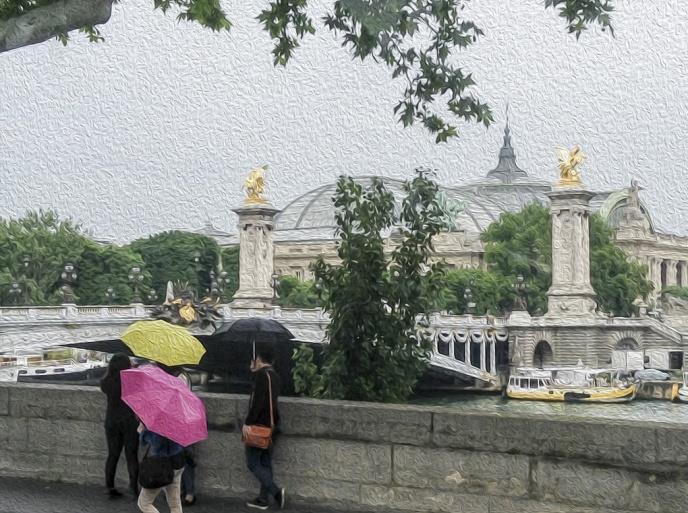



Mona Lisa Crowd
Under the Pyramid at the Louvre
So ends a wonderful travel experience.
WE GIVE a THUMBS UP to VANTAGE for the FOLLOWING REASONS
Good value for money
Air arrangements made for us
Logistics of getting from place to place handled by Vantage employees
Comfortable ship with spacious cabins, good food, variety of activities available
Beautiful French countryside and charming small towns and villages
Meaningful visit to Normandy and the other beaches involved in D-Day invasion
Friendliness of the French people in both Normandy and Brittany
Visit to the Louvre with 1 guide per each 6 guests (arranged by Vantage)
Free time in the ports for individual explorations on foot
Seeing the wonderful variety of dogs in France
